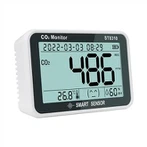Applications and Special Functions of Multimeter
1. Are digital multimeters better than analog multimeters?
Solution: Digital multimeters are quickly applied due to their high precision and sensitivity, fast measurement speed, multiple functions, small size, high input impedance, easy observation and powerful communication functions. There is a tendency to replace analog pointer watches.
But in some occasions, such as occasions with very strong electromagnetic interference, the data tested by the digital multimeter may deviate greatly, because the input impedance of the digital multimeter is very high, and it is very susceptible to the influence of the induced potential.
2. During maintenance, it is suspected that the diode or triode in the circuit may be damaged through troubleshooting. However, the conduction voltage is about 0.6V measured with the diode file of the digital meter, and the reverse direction is infinite. There is no problem, and there is no fault found when checking the circuit again, why?
Solution: The test voltage issued by most digital meter diode files is about 3-4.5V. If the tested transistor has a slight leakage or the characteristic curve has deteriorated, it cannot be displayed under such a low voltage. At this time, it is necessary to use an analog meter × 10K resistance file. The test voltage issued by this file is 10V or 15V. Under this test voltage, it will be found that the suspected transistor has leakage in the reverse direction. Similarly, when measuring the resistance of some precision sensitive components with very low withstand voltage, using an analog meter can easily damage the sensitive components. At this time, it is necessary to use a digital meter to measure.
3. Use a multimeter to measure the attenuated voltage value of the high-voltage probe. It turns out that the DCV test is more accurate, but the ACV error is large. Even with a high-accuracy multimeter, why?
Solution: The vast majority of multimeters use parallel connection to measure voltage. For the entire test circuit, the voltmeter itself is equivalent to a load that is the input impedance. The greater the load impedance, the smaller the impact on the circuit under test, and the more accurate the test will be. But nothing can be perfect, high impedance will sacrifice the bandwidth of the test. At present, the input impedance of the multimeter with a frequency response of about 100KHz on the market is about 1.1M, so it will have a great influence on the voltage at the terminal 2 of the high-impedance load. For example, the resistance of the high-voltage probe itself is very high.






